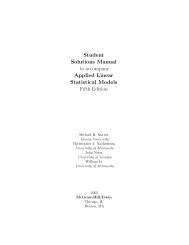Journal of Film Preservation - FIAF
Journal of Film Preservation - FIAF
Journal of Film Preservation - FIAF
You also want an ePaper? Increase the reach of your titles
YUMPU automatically turns print PDFs into web optimized ePapers that Google loves.
du cinéma muet, ce curieux mélange<br />
de didactisme, de reconstitution<br />
et d’images érotiques où le diable,<br />
interprété par Christensen lui-même,<br />
intervient au besoin, en a longtemps<br />
fait un objet de scandale. Avec le recul<br />
le film apparaît comme une œuvre<br />
exceptionnellement originale et<br />
novatrice.<br />
Préparé sous la direction de Jon<br />
Wengström, conservateur film du<br />
Swedish <strong>Film</strong> Institute, ce c<strong>of</strong>fret<br />
constitue un travail exemplaire<br />
de conservation, préservation et<br />
restauration de haut niveau. Les<br />
procédés de couleur originaux sont<br />
respectés et chaque film a fait l’objet<br />
d’une partition musicale nouvelle<br />
de Matti Bye. Tous les films ont<br />
des intertitres suédois et français;<br />
plusieurs proposent même des titres<br />
en français, allemand, espagnol, italien<br />
et portugais. Enfin chaque film est<br />
accompagné d’un livret de très belle<br />
tenue comprenant des essais, des notes<br />
biographiques et des détails sur sa<br />
restauration.<br />
Ce précieux c<strong>of</strong>fret est d’ores et déjà un<br />
objet de collection : à quand une suite?<br />
Terje Vigen, Victor Sjöström, 1917.<br />
<strong>Film</strong> history has perhaps been less kind to Mauritz Stiller, who gets the<br />
lion’s share <strong>of</strong> the SFI’s box set with three <strong>of</strong> his peak-career films: Herr Arnes<br />
Pengar (Sir Arne’s Treasure, 1919), Erotikon (1920) and Gösta Berlings Saga<br />
(1924). Stiller is remembered principally as Greta Garbo’s Svengali, lured<br />
into taking her to Hollywood and then cruelly neglected and rejected.<br />
Again, it has taken the act <strong>of</strong> physical rehabilitation <strong>of</strong> his films to show<br />
his mature versatility and to restore him to the Pantheon <strong>of</strong> accomplished,<br />
innovative and influential film-makers <strong>of</strong> the silent era where he properly<br />
belongs. Pro<strong>of</strong> is in this trio <strong>of</strong> chefs d’oeuvre, which range from his two<br />
energetic adaptations <strong>of</strong> epic stories by Selma Lagerlöf, both <strong>of</strong> which<br />
glory in winter landscapes, to the stately, sophisticated comedy <strong>of</strong> manners<br />
and infidelity among the upper classes, Erotikon, a genre with which<br />
Stiller is more commonly associated, his sharp and amused view <strong>of</strong> “sexual<br />
interchange” in high society being compared favourably with Bergman’s<br />
social comedies, such as Sommarnattens Leende (Smiles <strong>of</strong> a Summer Night,<br />
1955). But it is clear from the juxtaposition <strong>of</strong> these three films that Stiller<br />
was at his best out <strong>of</strong> doors, amongst the Nordic landscape, showing<br />
Man coming to terms with Nature, his own and that <strong>of</strong> his surroundings;<br />
by comparison, his drawing-room films, though beautifully and ironically<br />
observed, appear indulgent and slow. It is equally apparent that Herr Arnes<br />
Pengar, a stirring spectacle about greedy Scottish mercenaries in wintry<br />
16th-century Sweden, is his supreme achievement and a film deserving <strong>of</strong><br />
wider recognition. Nevertheless, Garbo inevitably gets some prominence<br />
in this collection in relation to her breakthrough film, Gösta Berlings Saga,<br />
and a flurry <strong>of</strong> fascinating extras shows her, pretty, plump, gauche and<br />
outgoing, in what is left <strong>of</strong> an early feature, Luffar-Petter (Peter the Tramp,<br />
1922), and some Stockholm commercials – and later, now a Hollywood star<br />
and global celebrity, looking nervous and introverted on board ship in a<br />
1929 newsreel.<br />
What, then, <strong>of</strong> the sixth title in this collection <strong>of</strong><br />
Swedish classics, Benjamin Christensen’s Häxan<br />
(Witchcraft Through the Ages, 1922), which seems<br />
to sit awkwardly alongside the more venerated<br />
work <strong>of</strong> Sjöström and Stiller? In fact, it is in<br />
retrospect the most original and innovative <strong>of</strong><br />
all the Swedish films made in this period. Older<br />
cinéphiles will remember it as a faithful repertory<br />
warhorse on the arthouse circuit in the 1960s<br />
and 70s, when its quasi-documentary style still<br />
looked startlingly novel and its Satanic theme<br />
quite shocking, but a film largely neglected since<br />
– which makes it all the riper for re-appraisal.<br />
The only film <strong>of</strong> Danish director Christensen to<br />
become widely known outside Scandinavia, it is<br />
an odd mixture <strong>of</strong> didactic lectures, suggestive<br />
dramatic recreations and erotic imagery, punctuated with scenes <strong>of</strong> nudity<br />
and torture, purporting to explain medieval perceptions <strong>of</strong> witchcraft, with<br />
Christensen himself playing the devil. Unsurprisingly, the film was cut by<br />
the censors and condemned by the Catholic church, and it failed at the box<strong>of</strong>fice.<br />
It remains unique in silent cinema, and a singular testament to the<br />
artistic freedom (and generous budgets) which Swedish cinema enjoyed<br />
during its “golden years” and which spawned so many masterpieces.<br />
80 <strong>Journal</strong> <strong>of</strong> <strong>Film</strong> <strong>Preservation</strong> / 81 / 2009
















